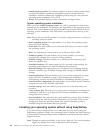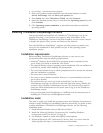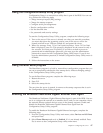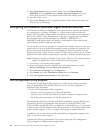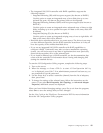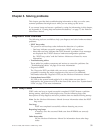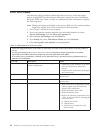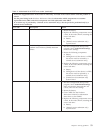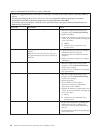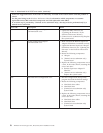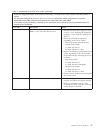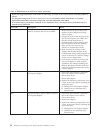
Chapter 5. Solving problems
This chapter provides basic troubleshooting information to help you solve some
common problems that might occur while you are setting up the server.
If you cannot locate and correct a problem by using the information in this chapter,
see Appendix A, “Getting help and technical assistance,” on page 77, the Hardware
Maintenance Manual.
Diagnostic tools overview
The following tools are available to help you diagnose and solve hardware-related
problems:
v POST beep codes
The power-on self-test beep codes indicate the detection of a problem.
– One beep indicates successful completion of POST, with no errors.
– More than one beep indicates that POST detected a problem. Error messages
are displayed also if POST detects a hardware-configuration problem.
See “POST beep codes” and the Hardware Maintenance Manual for more
information.
v
Troubleshooting tables
These tables list problem symptoms and actions to correct the problems. See
“Troubleshooting tables” on page 62 for more information.
v Diagnostics DVD
The Diagnostics DVD provided with your server contains the diagnostic
programs for testing the major components of the server. For additional
information about the Diagnostics DVD, see the Hardware Maintenance Manual.
v System-board error LEDs
An LED on the system board might be lit to help isolate an error that is
indicated by the system-error LED on the front of the server. See “System-board
LEDs” on page 75 for more information.
POST beep codes
POST emits one beep to signal successful completed. If POST detects a problem
during startup, other beep codes might occur. Use the following beep code
descriptions to help diagnose and solve problems that are detected during startup.
Note: See the Hardware Maintenance Manual for more information about the POST
beep codes.
One beep
POST was completed successfully without detecting any errors.
Repeating long beeps
A memory error has occurred. Make sure that all DIMMs are correctly
installed.
Other beep codes
See the Hardware Maintenance Manual for information about other beep
codes.
© Lenovo 2008, 2009. Portions © IBM Corp. 2008. 51




